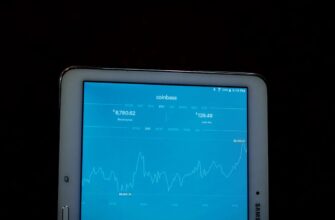## Introduction
When choosing between USDT (Tether) and USDC (USD Coin) for crypto transactions, fees can make or break your profitability. Both are $1-pegged stablecoins dominating the market, but their fee structures differ across exchanges, blockchains, and transaction types. This 900-word guide breaks down withdrawal costs, trading fees, network charges, and hidden expenses to help you minimize costs.
## Understanding USDT and USDC
USDT, issued by Tether, is the largest stablecoin by market cap ($110B+) and operates on 14+ blockchains including Ethereum, Tron, and Solana. USDC, managed by Circle, is known for stronger regulatory compliance and operates on 15+ networks. Neither charges direct holding fees, but transactional costs vary based on:
* **Network congestion**
* **Exchange policies**
* **Blockchain efficiency**
## Exchange Fees: Withdrawals & Deposits
Centralized exchanges (CEXs) set their own fees for moving USDT/USDC. Typically:
**USDT Withdrawal Fees (Sample):**
* Binance: $1-15 (varies by chain)
* Coinbase: $1-5 (ERC-20)
* Kraken: 0.8-25 USDT
**USDC Withdrawal Fees (Sample):**
* Binance: $0.8-10
* Coinbase: Free (for eligible users)
* Kraken: 0.25-10 USDC
USDC often has lower fees on compliant exchanges like Coinbase due to issuer partnerships. Always check chain-specific costs!
## Trading Fee Differences
Trading fees for USDT/USDC pairs are nearly identical on most exchanges. Binance, for example, charges 0.1% for both spot trades. However, two factors create indirect cost differences:
1. **Liquidity gaps:** Low-volume USDC pairs may have wider spreads.
2. **Quote currency bias:** Exchanges like Bybit offer fee discounts for USDC margin trades.
## Network Transaction Costs
Blockchain gas fees impact both equally when using the same network. Key comparisons:
* **Ethereum:** $1-$20 per transfer (same for USDT/USDC ERC-20)
* **Tron:** $0.5-$2 (favors USDT, its dominant chain)
* **Solana:** <$0.01 (favors USDC, its primary chain)
USDC’s broader integration with low-fee networks like Solana and Polygon often makes it cheaper for transfers.
## Hidden Fees & Other Costs
Watch for these overlooked expenses:
* **Stablecoin conversion fees:** Swapping USDT to USDC incurs 0.1%-0.3% on DEXs
* **Cross-chain bridges:** Transferring between networks costs $5-$30
* **Fiat conversions:** USD to USDC is often cheaper than USD to USDT
## Which Is Cheaper? The Verdict
| Scenario | Cheaper Option | Why |
|—————–|—————-|————————————–|
| Ethereum Transfers | Tie | Same network fees |
| Low-Fee Chains | USDC | Better Solana/Polygon integration |
| Tron Network | USDT | Native chain dominance |
| CEX Withdrawals | USDC | Lower fees on compliant exchanges |
| DEX Trading | Tie | Identical swap fees |
For most users, USDC offers slight fee advantages due to exchange partnerships and eco-friendly chains. USDT wins for Tron-based transactions.
## FAQ: USDT vs USDC Fees
### Are there holding fees for USDT or USDC?
No. Neither charges fees for wallet storage. Costs only apply to transactions (transfers, trades, conversions).
### Which exchange has the lowest USDT/USDC withdrawal fees?
Coinbase offers $0 USDC withdrawals for eligible users. For USDT, Bitstamp and Kraken often have sub-$1 fees on select chains like Algorand.
### Can I avoid network fees entirely?
Yes, by using:
* Layer-2 solutions (e.g., Polygon USDC)
* Off-chain transfers (e.g., Exchange balance to balance)
* Fee-free chains like Solana
### Is USDT or USDC cheaper on decentralized exchanges (DEXs)?
Fees are identical for swaps (0.05%-0.3% on Uniswap/PancakeSwap). However, USDC’s Solana presence enables cheaper trades via Orca/Raydium.
### How do I choose based on fees?
1. Prefer USDC if using Solana, Coinbase, or low-fee chains.
2. Choose USDT for Tron-based apps or high-liquidity pairs.
3. Always compare real-time fees on your preferred exchange and chain.
## Final Tips
* Use USDC on Solana for sub-cent transfers
* Monitor Ethereum gas fees with Etherscan
* Leverage exchange-native networks (e.g., Binance Smart Chain for lower costs)
Understanding these fee nuances ensures you retain more value in every transaction. Always verify costs against current network conditions!








